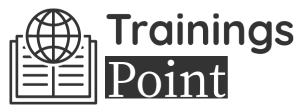Employers are seeing more mental health issues in their workforce than ever before. Long COVID has enhanced mental health concerns even more. Each year 1 in 5 adults is stricken with a mental illness (National Institute of Mental Health), making mental illness an everyday reality for many of your employees. Yet only 1 in 3 people seek help with their illness. The ADA, HIPPA, FMLA, and most states’ human/civil rights departments dictate how employers deal with employees with mental health problems and could charge employers with civil rights liability.
Privacy laws create challenges for employers to determine how serious a situation is and whether an employee poses a danger (though those with a mental illness pose no more risk of violence than those without a mental illness). Two-thirds of employees would take a pay cut for a job that supports mental health – do you? As a manager, what can you do to better recognize and take care of your employees’ mental health? Seventy percent of employees could do more to support their employees’ mental health according to the Society of Human Rights Management (SHRM, February 15, 2023).
WHY SHOULD YOU ATTEND?
Examples of the most common psychological disorders include major depression and dysthymia, bipolar disorder, anxiety, schizophrenia, and an array of personality disorders. Those individuals with depression have 2.5 times the risk of on-the-job injury. Workplace depression results in 200 million lost days annually. The disease is common, debilitating, and the number one cause of disability worldwide. Employers lose an estimated $52 billion annually in loss of productivity and insurance payments. It is worth your time as an employer to do all you can to support the psychological health and well-being of your employees.
With the increase in claims came an EEOC 2023 newly released Guidance on Mental Health Discrimination which is addressed to employees informing them of their employment rights under the ADA. Workplaces can and should play a significant role in minimizing their employees’ mental health risks. Employee stress levels continue to rise as more and more employees spend more and more hours at work without an increase in pay or benefits. Burnout and depression, particularly among millennials and millennial women, report these conditions more than any other generation.
LEARNING OBJECTIVES
- To differentiate mental health from mental illness
- To discuss the most frequent mental health conditions with emphasis on depression, anxiety, and personality disorders
- To identify the demographic groups most at risk for mental health issues
- To examine the myths of mental illness
- To list signs of possible mental health issues in the workplace
- To explore the costs of mental illness to U.S. businesses
- To list prevention strategies to enhance employees’ mental health
- To discuss management’s role in both the prevention and intervention strategies to deal with mental health in your workplace
WHO WILL BENEFIT?
- CEO
- COO
- CFO
- Directors
- Managers
- Supervisor
- HR
- Risk management
- OSHA professionals
- Occupational health nurse
Examples of the most common psychological disorders include major depression and dysthymia, bipolar disorder, anxiety, schizophrenia, and an array of personality disorders. Those individuals with depression have 2.5 times the risk of on-the-job injury. Workplace depression results in 200 million lost days annually. The disease is common, debilitating, and the number one cause of disability worldwide. Employers lose an estimated $52 billion annually in loss of productivity and insurance payments. It is worth your time as an employer to do all you can to support the psychological health and well-being of your employees.
With the increase in claims came an EEOC 2023 newly released Guidance on Mental Health Discrimination which is addressed to employees informing them of their employment rights under the ADA. Workplaces can and should play a significant role in minimizing their employees’ mental health risks. Employee stress levels continue to rise as more and more employees spend more and more hours at work without an increase in pay or benefits. Burnout and depression, particularly among millennials and millennial women, report these conditions more than any other generation.
- To differentiate mental health from mental illness
- To discuss the most frequent mental health conditions with emphasis on depression, anxiety, and personality disorders
- To identify the demographic groups most at risk for mental health issues
- To examine the myths of mental illness
- To list signs of possible mental health issues in the workplace
- To explore the costs of mental illness to U.S. businesses
- To list prevention strategies to enhance employees’ mental health
- To discuss management’s role in both the prevention and intervention strategies to deal with mental health in your workplace
- CEO
- COO
- CFO
- Directors
- Managers
- Supervisor
- HR
- Risk management
- OSHA professionals
- Occupational health nurse
Speaker Profile
 Dr. Susan Strauss
Dr. Susan Strauss
Dr. Susan Strauss is a national and international speaker, trainer and consultant. Her specialty areas include management/leadership development, organization development, communication, and harassment and bullying. She is an expert witness for discrimination and harassment lawsuits. She trains and consults with business, education, healthcare, law, and government organizations from both the public and private sector. Dr. Strauss has authored over 30 book chapters, books, and articles in professional journals. She has been featured on 20/20, CBS Evening News, and other television and radio programs as well as interviewed for newspaper and journal articles. She has her doctorate in organizational leadership, is …
Upcoming Webinars

How to Write Contracts for Procurement Professionals

How to Deal with Employees Who Love to Argue and Debate Eve…

Project Management for administrative professionals


Sunshine Act Reporting - Clarification for Clinical Research

Onboarding Best Practices for 2025: Proven Strategies to Po…

Transform Data into Insights: A Beginners Guide to Excel Pi…

Reprogramming your mind for Corporate Excellence: 4 Steps t…

Terminating Toxicity: Strategies For Leaders To Confidently…

ChatGPT and Project Management: Leveraging AI for Project M…

Uplifting the Credibility of HR: How to Build the Credibili…

How to Manage the Legal Landmine of the FMLA, ADA and Worke…

How to Write Effective Audit Observations: The Principles f…


Strategic Interviewing & Selection: Getting the Right Talen…


Onboarding Best Practices for Millennial and All Employees

Performance of Root Cause Analysis, CAPA, and Effectiveness…

Bridging Generational Divides in the Workplace


Emotional Intelligence: Mastering the Emotions of Great Lea…

FDA Audit Best Practices - Do's and Don'ts

2-Hour Virtual Seminar on How to Conduct an Internal Harass…

Accounting For Non Accountants : Debit, Credits And Financi…

Successful Strategies for FDA Expedited Pathways for Your D…

Regulation update Q1 2025: New and Proposed Regulations for…

Unlock Employee Loyalty: Stay Interviews Will Keep Them Eng…

Pay Transparency in Action: Strategies for Building Trust a…

Designing Employee Experiences to Build a Culture of Compli…


Reinvent Your Business with the Power of AI

Excel Lookup Functions: VLOOKUP, HLOOKUP, and XLOOKUP Made …

Developing and Implementing Quality Culture in the Organiza…

Tips and Techniques for Conducting an Effective Fraud Risk …

Break Free from Toxicity: Reclaim Your Power and Peace


Physician Employment Agreements: Problem Areas that can be …

Measure the Effectiveness of Compliance Programs by Engagin…

FDA Regulation of Artificial Intelligence/ Machine Learning

Quality Management Systems and Data Integrity

Implementing an Effective Human Error Reduction Program

Navigating 2025 Employment Laws: What Every Employer Needs …

Cleaning Data without Complex Functions - A Course for Data…


Succession Plan for 2025: It's Not Just for Emergencies - I…

Employers Should Prepare for Immigration Raids in 2025! Thi…

Managing Toxic Employees: Strategies For Leaders To Effecti…


Using High-Performance Coaching for Managers to Address Per…

